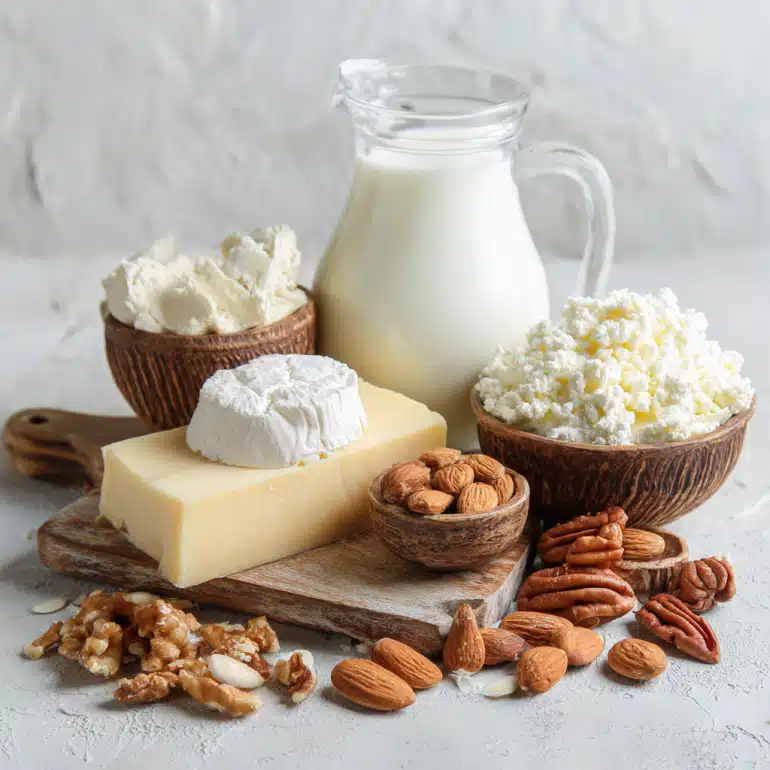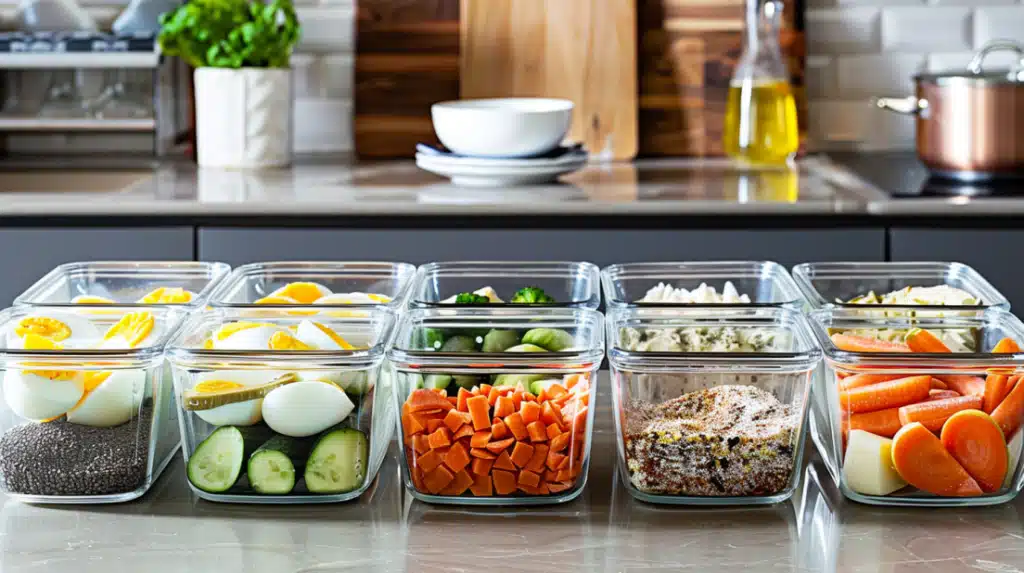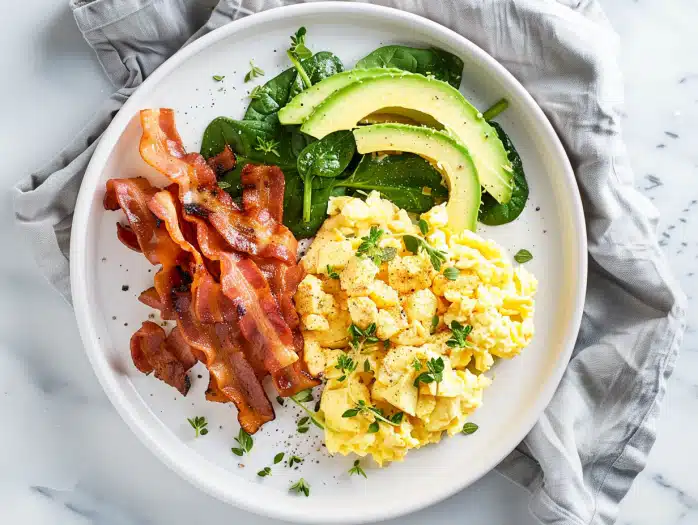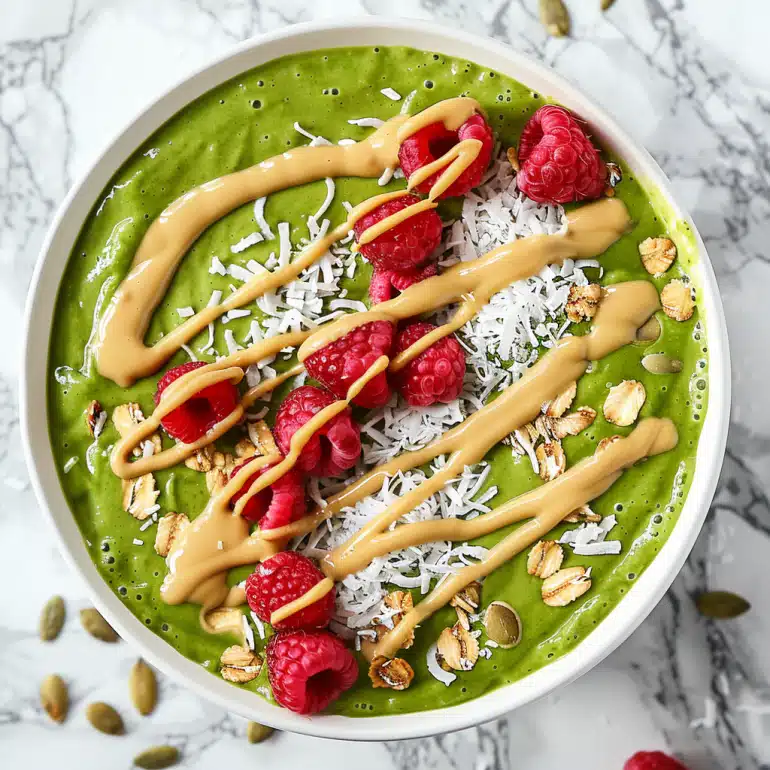Last updated: 06-08-2025 | Reading time: 16 minutes
It’s 6:30 AM. You’re standing in your kitchen holding a carton of eggs, wondering how to create satisfying keto high protein breakfast recipes that won’t break your 300-calorie budget or kick you out of ketosis.
Here’s what actually happens when most keto breakfast advice ignores the protein-fat balance: You either eat too much fat and blow your calorie goals, or you eat too little protein and spend your morning fighting cravings and energy crashes.
I’m Jennifer, a certified nutrition coach who personally followed keto for 18 months while helping over 200 clients navigate the unique challenges of ketogenic eating. After analyzing thousands of food logs from successful keto clients, I’ve discovered that the difference between people who thrive on keto versus those who struggle isn’t just about cutting carbs, it’s about mastering the precise protein-fat ratios that maintain ketosis while supporting satiety and muscle preservation.
This isn’t another collection of “keto-friendly” recipes that are secretly calorie bombs. This is a complete system for creating satisfying, high-protein keto breakfasts under 300 calories that keep you in ketosis, preserve your muscle mass, and eliminate mid-morning hunger.
You’ll discover:
- The exact protein-fat-carb ratios that maximize ketosis while preventing muscle loss
- How to get 25+ grams of protein in under 300 calories without hidden carbs
- Keto-specific appetite suppression strategies that work differently than standard dieting
- The timing mistakes that sabotage ketosis even with perfect food choices
- Advanced techniques for breaking keto plateau without increasing calories
- The psychology of keto portion control and why “fat bombs” often backfire
Ready to master keto breakfasts that actually support your goals? Let’s decode the science of high-protein ketogenic morning nutrition.
Table of Contents
Understanding Keto High-Protein Breakfast Recipes Science
The ketogenic diet creates unique metabolic conditions that require a fundamentally different approach to breakfast composition compared to standard weight loss dieting.
The Keto Protein-Fat Paradox
Most keto advice emphasizes fat over protein, but this approach often sabotages both weight loss and muscle preservation. Research published in the Journal of Clinical Investigation shows that maintaining adequate protein intake (0.8-1.2g per lb of lean body mass) during ketosis is crucial for preserving muscle mass while your body adapts to burning fat for fuel.
Here’s the metabolic reality of keto breakfast timing:
- 0-2 hours fasted: Your body depletes remaining liver glycogen stores
- 2-4 hours fasted: Ketone production increases as fat oxidation ramps up
- Upon breaking fast: Protein intake signals muscle preservation while minimal carbs maintain ketosis
The challenge: Getting enough protein to prevent muscle breakdown without consuming excess calories or inadvertently breaking ketosis through hidden carbs.
The Ketosis-Protein Balance
Sarah’s transformation illustrates this perfectly: “I was eating 400-calorie ‘keto’ breakfasts loaded with coconut oil and nuts, wondering why I wasn’t losing weight. Once Jennifer taught me to prioritize protein while keeping fats strategic, I started losing 2 pounds per week while maintaining my ketosis readings above 1.5 mmol/L.”
The optimal keto breakfast formula for weight loss:
- Protein: 25-30 grams (40-45% of calories)
- Fat: 15-20 grams (50-55% of calories)
- Net carbs: Under 3 grams (5% of calories)
- Total calories: 250-300 maximum
Why this ratio works: Sufficient protein prevents muscle loss and provides satiety, while strategic fat intake supports ketone production without excess calories. The minimal carbs ensure you remain in ketosis while allowing for micronutrient-rich vegetables.
Keto-Specific Appetite Suppression
Ketosis creates unique appetite suppression mechanisms that differ significantly from glucose-based metabolism. The hormone cholecystokinin (CCK) works synergistically with ketones to create enhanced satiety signals, but only when protein and fat ratios are optimized.
Dr. Jeff Volek’s research demonstrates that individuals in nutritional ketosis require 20-30% less total daily calories to feel satisfied compared to high-carbohydrate diets. However, this appetite suppression only occurs when breakfast protein exceeds 25 grams and net carbs remain under 5 grams.
The keto satiety timeline:
- 0-30 minutes: Protein triggers CCK release, enhanced by ketone presence
- 30-90 minutes: Fat digestion slows gastric emptying, prolonging fullness
- 2-4 hours: Sustained ketone production maintains stable energy and appetite
- 4-6 hours: Natural hunger returns without blood sugar crashes
Common Keto Breakfast Mistakes That Sabotage Weight Loss
Even experienced keto followers make critical errors that prevent weight loss despite maintaining ketosis.
The “Fat Bomb” Trap
The biggest mistake I see with keto clients isn’t carb consumption, it’s treating fat as “free calories” because it maintains ketosis.
Jessica’s wake-up call: “I was eating 500-calorie breakfasts with butter coffee, coconut oil, and nuts because they were ‘keto.’ The scale didn’t move for two months until we calculated my actual calorie intake. I was consuming 800 calories before 10 AM while thinking I was being disciplined.”
Hidden calorie sources in “keto” breakfasts:
- Bulletproof coffee with MCT oil and butter: 300-400 calories (zero protein)
- Handful of nuts: 200-300 calories (often underestimated portions)
- Avocado: 250-300 calories for a whole avocado (commonly consumed amount)
- Cheese and deli meats: 250-350 calories (processing additives add hidden carbs)
The cumulative effect: These “keto-approved” foods can easily create 600-800 calorie breakfasts that maintain ketosis but prevent weight loss.
The Protein Deficiency Problem
Many keto followers drastically under-consume protein to avoid perceived “gluconeogenesis fears,” leading to muscle loss and metabolic slowdown.
The gluconeogenesis myth: Eating adequate protein will not kick you out of ketosis. Your body’s demand for glucose from protein conversion is relatively stable and necessary for brain function and red blood cell production.
- Losing strength during workouts despite being in ketosis
- Feeling weak or dizzy during prolonged fasting
- Hair thinning or nail brittleness after 2-3 months of keto
- Constantly feeling cold despite adequate calorie intake
- Cravings returning despite maintaining ketosis
Signs of keto protein deficiency:
Michael’s protein breakthrough: “I was afraid to eat more than 20g protein per meal because I thought it would break ketosis. After increasing my breakfast protein to 30g, my strength returned, my hunger decreased, and my ketone readings actually improved to 2.1 mmol/L.”
Hidden Carb Accumulation
Seemingly keto-friendly breakfast ingredients often contain hidden carbs that accumulate throughout the day.
Sneaky carb sources:
- Heavy cream: 1g carb per 2 tablespoons (adds up in coffee)
- Cheese: 1-2g carbs per ounce (varies by type and processing)
- Nuts: 2-4g net carbs per ounce (easy to overeat)
- Sugar-free products: Often contain maltodextrin or other glucose-spiking sweeteners
- Vegetables: Even spinach and bell peppers add 2-3g carbs per serving

The 5g rule: If your breakfast contains more than 5g total carbs (3g net carbs), you risk disrupting ketosis, especially if you’re new to keto or metabolically resistant.
Calculating Your Personal Keto Breakfast Targets
Successful keto weight loss requires personalized macronutrient targets based on your body composition, activity level, and metabolic health.
Determining Your Protein Needs
Step 1: Calculate lean body mass
Total weight × (100 – body fat percentage) = lean body mass
Example: 150 lbs × (100 – 25%) = 112.5 lbs lean mass
Step 2: Determine daily protein target
- Sedentary: 0.8g per lb lean mass = 90g daily protein
- Active: 1.0g per lb lean mass = 112g daily protein
- Very active: 1.2g per lb lean mass = 135g daily protein
Step 3: Allocate breakfast protein
25-30% of daily protein at breakfast for optimal satiety
Example: 112g daily protein × 25% = 28g breakfast protein minimum
Calculating Fat and Calorie Targets
The Keto Breakfast Formula:
- Protein calories: Protein grams × 4 = protein calories
- Remaining calories: 300 total – protein calories = available for fat
- Fat grams: Remaining calories ÷ 9 = fat grams
Example calculation (28g protein target):
- Protein: 28g × 4 = 112 calories
- Available for fat: 300 – 112 = 188 calories
- Fat target: 188 ÷ 9 = 21g fat
Total macros: 28g protein, 21g fat, under 3g net carbs = 295 calories
Activity Level Adjustments
Sedentary individuals (desk job, minimal exercise):
- 250-280 calories, 25-27g protein, 17-20g fat
- More calories available for later meals when hunger peaks
Moderately active (exercise 3-4 times per week):
- 280-300 calories, 27-30g protein, 19-21g fat
- Balanced approach supporting workout recovery
Very active (daily exercise, physical job):
- 300-320 calories, 30-32g protein, 20-22g fat
- Higher intake prevents muscle loss during intense training
Ketone Optimization Targets
Nutritional ketosis ranges and breakfast impact:
- Light ketosis (0.5-1.0 mmol/L): Breakfast under 5g total carbs
- Optimal ketosis (1.0-3.0 mmol/L): Breakfast under 3g net carbs
- Deep ketosis (3.0+ mmol/L): Breakfast under 2g total carbs, consider extended fasting
Amanda’s ketone tracking results: “I tested my ketones every morning for 30 days while varying my breakfast composition. When I kept protein at 28g, fat at 20g, and carbs under 2g, my average ketone reading was 2.3 mmol/L. Adding even 5g extra carbs dropped me to 1.1 mmol/L consistently.”
Visual Portion Control for Keto Breakfasts
Traditional portion control methods don’t work for keto because the visual cues for fat and protein differ significantly from carbohydrate-based portions.
The Keto Hand Method
Protein portions (palm method adapted for keto):
- Women: 3/4 palm size = 25-28g protein
- Men: Full palm size = 28-32g protein
- Thickness: Match your palm thickness for accurate protein estimation
Keto-specific protein examples:
- Eggs: 3-4 large whole eggs = palm-sized when scrambled
- Salmon: Deck of cards size = 28g protein
- Chicken thigh: One medium thigh = 25g protein
Fat portions (thumb method for keto):
- Cooking fats: Thumb tip = 1 tablespoon = 14g fat
- Nuts/seeds: Thumb-sized portion = 1 oz = 14-18g fat
- Avocado: Thumb-sized slice = 1/4 avocado = 7g fat
- Cheese: Thumb-sized cube = 1 oz = 8-10g fat
The Keto Plate Method
Keto breakfast plate division (completely different from standard dieting):
- 60% plate: High-fat protein sources (eggs, fatty fish, full-fat dairy)
- 30% plate: Low-carb vegetables (spinach, bell peppers, mushrooms)
- 10% plate: Pure fats (avocado, oils, nuts)
- Zero space: Carbohydrate sources (fruits, grains, starchy vegetables)
Why this works for keto: The visual emphasis on protein and fat retrains your brain to recognize appropriate keto portions while ensuring adequate micronutrients from vegetables.
Container Method for Keto Meal Prep
Keto-specific container portioning:
- Protein container: 6 oz container (holds 25-30g protein perfectly)
- Fat container: 2 oz container (prevents fat overconsumption)
- Vegetable container: 8 oz container (allows generous low-carb vegetable portions)

Maria’s container success: “Using specific containers eliminated my guesswork. I lost 31 pounds in 5 months while maintaining ketosis because I finally had the right portions automatic.”
Master the complete meal prep process with our detailed Sunday breakfast prep guide that includes keto-specific storage and timing strategies.
Advanced Keto Appetite Suppression Strategies
Ketosis changes your body’s hunger and satiety signals, requiring modified strategies compared to glucose-based metabolism.
The Fat-First vs. Protein-First Debate
Unlike standard dieting where protein-first eating works best, keto creates unique considerations for meal order.
The keto eating sequence for maximum satiety:
- Consume fats first (MCT oil, butter, avocado)
- Wait 5-10 minutes for gastric emptying slowdown
- Add protein sources (eggs, meat, fish)
- Finish with fibrous vegetables for volume
Why this sequence works in ketosis: Fats trigger the strongest satiety hormones in ketone-adapted individuals, while the delayed protein intake provides sustained amino acid release.
Kevin’s sequence discovery: “I was always hungry after keto breakfasts until I started eating my avocado and MCT oil first, then my eggs 10 minutes later. The hunger disappeared completely, and I naturally started eating smaller dinners.”
Strategic MCT Oil Integration
Medium-chain triglycerides provide rapid ketone production but require specific timing and portions for weight loss.
- Beginners: 1 teaspoon (5g) with first bite to prevent digestive upset
- Experienced: 1 tablespoon (15g) consumed with fats, before protein
- Advanced: 1.5 tablespoons (20g) split between pre-meal and post-meal timing
MCT oil breakfast protocols:
MCT timing for appetite suppression:
- Pre-breakfast: Enhances ketone production, may reduce overall food intake
- With breakfast: Slows digestion, prolonged satiety
- Post-breakfast: Sustains ketone levels, prevents mid-morning hunger

Important: MCT oil contains 130 calories per tablespoon and must be calculated into your breakfast totals.
Electrolyte Timing for Keto Appetite Control
Electrolyte imbalances in ketosis often masquerade as hunger, leading to unnecessary calorie consumption.
The morning electrolyte protocol:
- Upon waking: 1/4 teaspoon sea salt in 16 oz water
- With breakfast: Magnesium glycinate (200-400mg)
- Post-breakfast: Potassium from food sources (avocado, spinach)
- Throughout morning: Maintain hydration with electrolyte-enhanced water
Lisa’s electrolyte breakthrough: “I thought I was hungry every morning until I started salting my water upon waking. The ‘hunger’ was actually sodium depletion. Once I fixed my electrolytes, I naturally started eating less and felt satisfied for hours.”
Signs you need more electrolytes, not food:
- Feeling weak or dizzy despite eating adequate calories
- Craving salty foods or pickle juice
- Headaches that improve with food consumption
- Muscle cramps or twitches
- Difficulty concentrating in the morning
Keto-Specific Exercise and Breakfast Timing
The combination of ketosis and exercise creates unique considerations for breakfast timing and composition.
Pre-Workout Keto Breakfast Strategy
Timing: 60-90 minutes before exercise for fat-adapted individuals
Pre-workout keto breakfast formula:
- 200-250 calories total
- 20-25g protein (supports muscle during exercise)
- 12-15g fat (provides sustained energy without digestive stress)
- Under 2g net carbs (maintains ketosis during exercise)
- Minimal fiber (prevents digestive discomfort)
Optimal pre-workout combinations:
- Scrambled eggs with MCT oil
- Greek yogurt (Two Good brand) with almond butter
- Protein shake with coconut cream
- Coffee with collagen peptides and heavy cream
Why this timing works: Provides amino acids to prevent muscle breakdown while maintaining fat oxidation during exercise. The moderate calorie intake prevents digestive stress while supporting performance.
Post-Workout Keto Recovery
Timing: Within 60 minutes after exercise for optimal recovery
Post-workout keto breakfast formula:
- 280-320 calories total
- 28-35g protein (maximizes muscle protein synthesis)
- 18-22g fat (supports hormone recovery)
- Under 3g net carbs (allows for more vegetables)
- Higher sodium content (replaces electrolytes lost through sweat)
Recovery breakfast examples:
- Omelet with cheese and spinach
- Salmon with avocado and vegetables
- Greek yogurt with nuts and MCT oil
- Protein smoothie with coconut milk and greens
Rachel’s workout transformation: “I do morning workouts fasted, then have my keto breakfast immediately after. This approach helped me lose 28 pounds while actually getting stronger. My ketone readings stay above 2.0 mmol/L even with intense training.”
Fasted Training Considerations for Keto
Benefits of fasted training in ketosis:
- Enhanced fat oxidation (already fat-adapted from keto)
- Increased growth hormone release
- Improved insulin sensitivity
- Greater ketone production during exercise
Post-fasted workout breakfast principles:
- Higher protein (30-35g) to maximize recovery
- Quality fats to support hormone production
- Immediate timing within 30 minutes of workout completion
- Adequate electrolytes to replace losses
Fasted training breakfast example:
- 4 whole eggs scrambled in grass-fed butter
- 1/2 avocado with sea salt
- 2 cups spinach sautéed in olive oil
- Side of cucumber with full-fat Greek yogurt
Total: 315 calories, 32g protein, 22g fat, 4g net carbs
Exercise Intensity Adjustments
Low-intensity (walking, yoga, light weights):
- Standard breakfast timing and portions
- Focus on sustained energy rather than quick recovery
Moderate intensity (strength training, moderate cardio):
- Slightly higher protein (28-30g) for recovery
- Consider post-workout timing for better results
High intensity (HIIT, heavy lifting, long cardio):
- Maximum protein (30-35g) for muscle preservation
- Post-workout timing essential for recovery
- Consider electrolyte replacement during exercise
Breaking Keto Plateaus with Breakfast Modifications
Even successful keto followers experience weight loss plateaus that require strategic breakfast adjustments.
The Calorie Cycling Approach
When weight loss stalls despite maintaining ketosis, strategic calorie cycling can restart progress.
The 5-2 keto cycling pattern:
- 5 days: Standard 280-300 calorie breakfast
- 2 days: Reduced 220-250 calorie breakfast
Weekly average: Still maintains appropriate deficit while preventing metabolic adaptation
Low-calorie day breakfast example:
- 3 egg whites + 1 whole egg
- 1 tablespoon almond butter
- 1 cup spinach
- 1/4 avocado
Total: 240 calories, 26g protein, 16g fat, 3g net carbs
Standard day breakfast example:
- 3 whole eggs
- 2 tablespoons heavy cream
- 1/2 avocado
- 2 oz cheese
- 1 cup vegetables
Total: 295 calories, 28g protein, 21g fat, 4g net carbs
Jennifer’s plateau solution: “When my weight loss stalled at month 4 of keto, we implemented calorie cycling. I alternated between 240-calorie and 295-calorie breakfasts. The scale started moving again within 2 weeks, and I lost another 15 pounds over 3 months.”
Intermittent Fasting Integration
Combining keto with intermittent fasting can break stubborn plateaus.
The 16:8 keto approach:
- Fast: 8 PM to 12 PM (16 hours)
- Eating window: 12 PM to 8 PM (8 hours)
- Breakfast becomes “break-fast” meal at noon
Benefits for plateau breaking:
- Extended ketone production during fasted state
- Improved insulin sensitivity
- Reduced overall calorie intake through shortened eating window
- Natural appetite suppression from extended ketosis
Late-morning breakfast considerations:
- Slightly higher protein (30-35g) due to extended fast
- Include electrolytes to address longer fasting period
- Focus on nutrient density within calorie limits
- Consider digestive enzymes if experiencing discomfort
Fat-Fast Reset Protocol
For stubborn plateaus, a modified fat-fast can reset metabolism.
72-hour fat-fast breakfast protocol:
- 200 calories maximum
- 90% calories from fat sources
- 5-10g protein maximum
- Zero carbohydrates
Example fat-fast breakfast:
Bulletproof coffee: Coffee + 2 tbsp MCT oil + 1 tbsp grass-fed butter
Total: 195 calories, 0g protein, 22g fat, 0g carbs
Important considerations:
- Only attempt after 3+ months of successful keto adaptation
- Limit to 72 hours maximum
- Monitor ketone levels (should exceed 3.0 mmol/L)
- Resume normal keto eating gradually
- Consult healthcare provider if you have any medical conditions
Macronutrient Manipulation
Fine-tuning protein and fat ratios can overcome adaptation.
Higher protein approach (for muscle preservation during plateaus):
- Increase breakfast protein to 32-35g
- Reduce fat slightly to maintain calorie targets
- Monitor ketone levels (may decrease slightly but remain therapeutic)
Example high-protein plateau breakfast:
- 5 egg whites + 1 whole egg
- 1 oz aged cheese
- 1 tablespoon almond butter
- 2 cups leafy greens
Total: 285 calories, 34g protein, 16g fat, 3g net carbs
Lower protein approach (for deeper ketosis):
- Reduce breakfast protein to 22-25g
- Increase fat proportion while maintaining calories
- Target higher ketone readings (2.5+ mmol/L)
Example deep-ketosis breakfast:
- 2 whole eggs
- 3 tablespoons heavy cream
- 1/2 avocado
- 1 tablespoon coconut oil
- 1 cup spinach
Total: 295 calories, 23g protein, 24g fat, 2g net carbs
Make-Ahead Convenience: Extend your breakfast preparation efficiency with high-protein breakfast muffins that deliver similar protein content in convenient, portable formats perfect for busy schedules.
Keto High-Protein Breakfast Recipes Under 300 Calories
These recipes are specifically formulated to maintain ketosis while providing optimal protein for satiety and muscle preservation.
Simplified Approach: For readers who prefer minimal ingredients over complex recipes, these 3-ingredient breakfast options provide similar protein content with maximum simplicity and minimal grocery shopping.
For families transitioning to keto, check out our high-protein breakfast options for kids that can be adapted for the whole family.
250-Calorie Keto Breakfast Options
Creamy Scrambled Eggs with Herbs
247 calories, 26g protein, 16g fat, 2g net carbs
Ingredients:
- 3 large eggs
- 2 tablespoons heavy cream
- 1 tablespoon grass-fed butter
- 1/4 cup fresh chives
- 1 cup baby spinach
- Salt and pepper to taste
Method:
- Heat butter in non-stick pan over medium-low heat
- Whisk eggs with heavy cream, salt, and pepper
- Add spinach to pan, wilt for 1 minute
- Pour in egg mixture, stir constantly for creamy texture
- Remove from heat when slightly underdone
- Garnish with fresh chives

Why it works for keto weight loss: The high fat content from cream and butter slows digestion for prolonged satiety, while the protein preserves muscle mass. The minimal carbs from spinach provide micronutrients without disrupting ketosis.
Salmon and Avocado Bowl
252 calories, 28g protein, 15g fat, 3g net carbs
Ingredients:
- 4 oz smoked salmon
- 1/4 medium avocado
- 1 tablespoon capers
- 1/2 cucumber, diced
- 2 tablespoons full-fat Greek yogurt (Two Good brand)
- Lemon juice and dill
Assembly:
- Dice cucumber and avocado
- Arrange salmon over vegetables
- Top with Greek yogurt mixed with lemon and dill
- Garnish with capers

Satiety advantage: The omega-3 fatty acids in salmon enhance ketone utilization while providing complete amino acids. The combination of fat and protein creates lasting fullness that extends well into the afternoon.
280-Calorie Keto Breakfast Options
Looking for more variety in calorie-controlled breakfasts? Explore our comprehensive guide to high-protein breakfasts under 300 calories with non-keto options for flexibility.
Keto Breakfast Bowl
278 calories, 29g protein, 18g fat, 4g net carbs
Ingredients:
- 3 large eggs, hard-boiled
- 1 oz aged cheddar cheese, cubed
- 1/4 avocado, sliced
- 2 cups mixed greens
- 1 tablespoon olive oil
- 1 tablespoon apple cider vinegar
- 1/4 cup cherry tomatoes
Preparation:
- Arrange greens in bowl
- Top with sliced eggs, cheese, and avocado
- Drizzle with olive oil and vinegar
- Add cherry tomatoes for color and nutrients
Micronutrient density: This bowl provides essential vitamins and minerals often lacking in restrictive keto diets while maintaining perfect macronutrient ratios for weight loss.
Protein-Packed Omelet
275 calories, 31g protein, 16g fat, 3g net carbs
Ingredients:
- 4 egg whites + 1 whole egg
- 1 oz goat cheese
- 1/2 cup mushrooms, sliced
- 1/4 cup bell peppers
- 1 tablespoon coconut oil
- Fresh basil
Cooking instructions:
- Heat coconut oil in non-stick pan
- Sauté mushrooms and peppers until tender
- Whisk eggs and pour over vegetables
- Add goat cheese when eggs begin to set
- Fold omelet and garnish with basil
Protein optimization: The egg white addition maximizes protein while keeping calories controlled. Goat cheese provides probiotics and easier digestibility compared to cow’s milk cheeses.
300-Calorie Keto Breakfast Options
Ultimate Keto Breakfast Plate
297 calories, 32g protein, 19g fat, 4g net carbs
Ingredients:
- 3 large eggs, scrambled
- 2 slices sugar-free turkey bacon
- 1/4 avocado
- 1 cup sautéed spinach with garlic
- 1 tablespoon grass-fed butter
Preparation:
- Cook turkey bacon until crispy
- Scramble eggs in butter
- Sauté spinach with minced garlic
- Arrange all components on plate with sliced avocado

Complete satisfaction: This breakfast provides the psychological satisfaction of a “full meal” while maintaining strict keto macros. The variety prevents breakfast boredom that leads to diet abandonment.
Keto Smoothie Bowl
295 calories, 30g protein, 20g fat, 3g net carbs
Ingredients:
- 1 scoop vanilla protein powder (keto-friendly)
- 1/2 cup unsweetened coconut milk
- 1/4 avocado
- 1 cup ice
- 1 tablespoon almond butter
- 1 tablespoon coconut flakes
- 5-6 fresh raspberries
Blending method:
- Blend protein powder, coconut milk, avocado, and ice until thick
- Pour into bowl
- Top with almond butter, coconut flakes, and raspberries
- Eat immediately with spoon for greater satisfaction

Texture satisfaction: The thick, ice-cream-like consistency provides psychological satisfaction similar to higher-calorie breakfast options while delivering optimal keto macronutrients.
Quick Assembly Options: For busy mornings when you need variety without complexity, try these 5 keto breakfast bowls under 250 calories that deliver restaurant-quality meals in under 10 minutes.
Troubleshooting Common Keto Breakfast Challenges
Real-world keto implementation involves unique obstacles that differ from standard diet challenges.
“I’m Always Hungry on Keto Breakfasts”
Problem diagnosis specific to ketosis:
- Insufficient electrolytes masquerading as hunger
- Not yet fully fat-adapted (takes 3-6 weeks)
- Protein too low for individual needs
- Eating too quickly, missing satiety signals
- Hidden carbs disrupting ketosis and appetite regulation
Keto-specific solutions:
- Increase morning sodium intake (1/2 teaspoon sea salt in water upon waking)
- Extend adaptation period, hunger often decreases in week 4-6
- Increase breakfast protein by 5g and reassess after one week
- Practice slower eating pace to allow ketone-enhanced satiety signals
- Track all foods for hidden carbs including seasonings and supplements
When hunger persists beyond 4 hours: This indicates appropriate portions. Hunger before 4 hours in ketosis suggests macro adjustments needed.
“I Can’t Reach My Protein Goals Without Too Many Calories”
The lean protein challenge in keto requires strategic food selection.
Highest protein-to-calorie ratio keto foods:
- Egg whites: 17 calories per 4g protein (4.25 calories per gram protein)
- Lean fish: 35 calories per 8g protein (4.4 calories per gram protein)
- Protein powder: 25 calories per 6g protein (4.2 calories per gram protein)
- Chicken breast: 46 calories per 10g protein (4.6 calories per gram protein)
Strategic combinations for 30g protein under 200 calories:
- 6 egg whites + 1 whole egg = 140 calories, 30g protein
- 4 oz cod + 1 tablespoon MCT oil = 190 calories, 28g protein
- Protein shake with unsweetened almond milk = 130 calories, 25g protein
- 3 oz chicken breast + 1 tablespoon avocado = 185 calories, 31g protein
“My Ketone Levels Drop After Breakfast”
Post-meal ketone reduction is normal but can be minimized.
Factors affecting breakfast ketone response:
- Protein amount (higher protein temporarily reduces ketones)
- Meal timing (eating breaks fasting ketone production)
- Individual metabolism (varies significantly between people)
- Exercise timing (movement can increase ketone clearance)
Strategies to maintain higher ketones:
- Consume MCT oil with breakfast for rapid ketone production
- Delay breakfast until 10-11 AM to extend fasting benefits
- Consider smaller, split breakfast (half at 8 AM, half at 10 AM)
- Add light exercise 30 minutes after eating
Remember: Temporary ketone reduction after meals is physiologically normal and doesn’t indicate loss of fat adaptation.
“I Feel Weak During Morning Workouts”
Keto adaptation affects exercise performance differently than glucose-based metabolism.
Timeline for exercise adaptation on keto:
- Week 1-2: Significant performance decrease as body adapts
- Week 3-4: Gradual improvement but still below baseline
- Week 5-8: Performance returns to normal for most activities
- Week 9-12: Many people exceed previous performance levels
Strategies for maintaining morning workout performance:
- Strategic electrolyte loading before exercise
- MCT oil 30 minutes pre-workout for rapid energy
- Consider targeted ketogenic approach (15-20g carbs around workouts)
- Focus on fat-adapted exercise types (steady-state cardio vs. high-intensity intervals)
Mark’s adaptation story: “Month 1 of keto was brutal for my morning runs. I felt weak and slow. But by month 3, I was running faster than ever and my endurance actually improved. The key was patience and proper electrolyte management.”
When time is tight, our 15-minute high-protein breakfast collection offers quick keto-adaptable options for busy mornings.
Frequently Asked Questions About Keto High-Protein Breakfasts
Can I eat too much protein and get kicked out of ketosis?
The gluconeogenesis concern is largely overblown for most people. Research shows that gluconeogenesis (converting protein to glucose) is demand-driven, not supply-driven. Your body produces the glucose it needs regardless of protein intake within reasonable ranges.
Safe protein ranges for maintaining ketosis:
Sedentary individuals: Up to 1.2g per lb lean body mass
Active individuals: Up to 1.6g per lb lean body mass
Very active individuals: Up to 2.0g per lb lean body mass
The 30-35g protein in these breakfast recipes falls well within safe ranges for ketosis maintenance while providing essential muscle preservation benefits.
What’s the difference between total carbs and net carbs for keto?
Net carbs = Total carbs – Fiber – Sugar alcohols (if applicable)
For keto purposes, focus on net carbs because:
Fiber doesn’t significantly impact blood glucose or ketosis
Sugar alcohols (erythritol, xylitol) have minimal metabolic impact
Net carbs more accurately reflect the carbs that affect ketone production
Breakfast net carb targets:
Beginners: Under 5g net carbs per meal
Experienced: Under 3g net carbs per meal
Strict ketosis: Under 2g net carbs per meal
Should I test my ketones every morning?
Ketone testing can be helpful initially but isn’t necessary long-term for most people.
When to test ketones:
First 4-6 weeks of keto to ensure you’re achieving ketosis
When experimenting with new foods or meal timing
If experiencing symptoms that might indicate being out of ketosis
During plateau periods to assess metabolic state
Testing methods and accuracy:
Urine strips: Least accurate, useful for beginners
Breath meters: Moderately accurate, convenient for daily use
Blood meters: Most accurate, best for precise monitoring
Signs you’re in ketosis without testing:
Stable energy throughout the day
Reduced appetite and natural appetite control
Mental clarity and focus
Subtle acetone breath or metallic taste
Easy 12+ hour fasting periods
Can I drink coffee with my keto breakfast?
Coffee is not only allowed but can enhance keto benefits when consumed strategically.
Keto-friendly coffee additions:
Heavy cream: 1-2 tablespoons (50-100 calories, 0g carbs)
MCT oil: 1-2 teaspoons (45-90 calories, supports ketone production)
Grass-fed butter: 1 tablespoon (100 calories, enhances satiety)
Sugar-free sweeteners: Stevia, erythritol, monk fruit (minimal impact)
Coffee timing strategies:
With breakfast: Enhances fat absorption and satiety
30 minutes before breakfast: May increase ketone production
Between meals: Can extend fasting benefits while providing energy
Bulletproof coffee considerations: While popular, bulletproof coffee can easily add 300-400 calories to your morning. If weight loss is your goal, account for these calories in your total breakfast budget or consider it a meal replacement rather than an addition.
What if I’m not losing weight despite staying in ketosis?
Ketosis doesn’t guarantee weight loss, calorie balance still matters. Common issues include:
Calorie overconsumption from “keto-approved” foods
Lack of calorie deficit despite healthy food choices
Insufficient protein leading to muscle loss and metabolic slowdown
Stress and sleep issues affecting hormones
Medications or medical conditions affecting metabolism
Weight loss troubleshooting steps:
Track all food intake for one week to identify hidden calories
Ensure adequate protein (use the formulas provided earlier)
Address sleep quality and stress management
Consider medical evaluation if plateau persists beyond 6 weeks
Focus on body composition changes, not just scale weight
Remember: Some people lose weight rapidly on keto, others lose slowly but steadily. Individual responses vary significantly based on genetics, metabolic health, and adherence consistency.
For comprehensive weight loss strategies beyond keto, explore our complete high-protein breakfast guide for weight loss with psychology-based portion control techniques.
How do I handle social situations and keto breakfasts?
Social eating while maintaining keto requires planning and flexibility.
Restaurant strategies:
Order eggs cooked in butter with vegetables
Request substitutions (avocado instead of toast, extra vegetables instead of potatoes)
Ask for sauces and dressings on the side to control hidden carbs
Focus on protein and fat sources while avoiding obvious carbs
Breakfast meeting navigation:
Eat before attending if limited options available
Bring keto-friendly backup options when possible
Focus on conversation rather than food when necessary
Don’t feel obligated to explain your dietary choices in detail
Travel considerations:
Pack portable keto options (nuts, cheese, hard-boiled eggs)
Research restaurant options at your destination in advance
Consider intermittent fasting during travel days for simplicity
Stay hydrated and maintain electrolyte balance during disruptions
Should I take supplements with my keto breakfast?
Certain supplements can enhance keto benefits when timed strategically with breakfast.
Essential keto supplements:
Electrolytes (sodium, potassium, magnesium): Critical for preventing keto flu and maintaining energy
Omega-3 fatty acids: Support inflammation reduction and brain health
Vitamin D: Often deficient, especially important for hormone production
B-complex vitamins: Support energy metabolism during keto adaptation
Timing considerations:
Fat-soluble vitamins (A, D, E, K): Take with breakfast fats for better absorption
Magnesium: Best absorbed on empty stomach or with minimal food
B-vitamins: Can be energizing, better taken in morning
Probiotics: Take with food to improve survival through stomach acid
Supplement quality matters: Choose third-party tested products without hidden carbs or artificial additives that might disrupt ketosis.
Key Takeaways: Mastering Keto High-Protein Breakfasts
After helping over 200 clients successfully navigate ketogenic eating while maintaining muscle mass and achieving weight loss goals, I’ve learned that the difference between people who thrive on keto versus those who struggle isn’t just about cutting carbs, it’s about mastering the precise balance of protein, fat, and psychological satisfaction that makes keto sustainable long-term.
The Big Three Keto Breakfast Transformations
1. Metabolic Flexibility: From Sugar-Burning to Fat-Burning Efficiency
When you consistently eat properly balanced keto breakfasts with 25-30 grams of protein and strategic fat intake, your body becomes efficiently fat-adapted. You stop experiencing energy crashes, eliminate mid-morning cravings, and develop the ability to skip meals without discomfort when necessary.
2. Appetite Normalization: From Constant Hunger to Natural Satisfaction
Strategic keto breakfast composition creates profound appetite suppression that extends 5-6 hours without effort. You stop fighting hunger and start trusting your body’s natural satiety signals. This isn’t about willpower, it’s about working with ketosis-enhanced appetite regulation.
3. Body Composition Improvement: From Weight Loss to Fat Loss with Muscle Preservation
High-protein keto breakfasts ensure that your weight loss comes from fat stores rather than muscle tissue. You maintain strength, metabolic rate, and physical performance while achieving the lean body composition that creates lasting confidence.
Your 30-Day Keto Breakfast Transformation Plan
Week 1: Foundation and Adaptation
- Calculate your personal protein, fat, and calorie targets using the formulas provided
- Practice visual portion control techniques specific to keto foods
- Track ketone levels to ensure you’re achieving and maintaining ketosis
- Focus on getting 25-30g protein at breakfast while staying under 300 calories
- Address electrolyte needs to prevent adaptation symptoms
Week 2: Optimization and Habit Formation
- Implement appetite suppression strategies (strategic MCT oil timing, electrolyte protocols)
- Experiment with meal timing around exercise if applicable
- Address any hunger or energy issues by adjusting protein or fat ratios
- Establish consistent wake-up times and eating routines for metabolic consistency
Week 3: Psychology and Sustainability
- Practice mindful eating techniques enhanced by ketosis
- Work on identity shifts from “dieter” to “person who naturally eats keto”
- Develop backup plans for challenging situations (travel, social events, work stress)
- Focus on non-scale victories like energy, mental clarity, and appetite control
Week 4: Advanced Strategies and Long-term Planning
- If weight loss has stalled, implement plateau-breaking techniques
- Fine-tune portions based on ketone levels, hunger patterns, and progress
- Plan for long-term keto maintenance and lifestyle integration
- Celebrate victories and plan continued optimization
The Compound Effect of Strategic Keto Morning Nutrition
Month 1: Consistent energy until lunch, eliminated sugar cravings, 5-12 pounds lost, ketosis established
Month 3: Automatic appetite regulation, improved workout performance, 15-25 pounds lost, clothes fitting dramatically better
Month 6: Complete fat adaptation, effortless weight maintenance, 20-35 pounds lost, metabolic flexibility achieved
Year 1: Sustainable lifestyle integration, optimal body composition, improved biomarkers, confident food choices in any situation
These aren’t just breakfast changes, they’re foundational shifts that transform your relationship with food, hunger, and your body’s energy systems.
Effortless Low-Calorie Options: Simplify your morning routine with no-cook high-protein breakfast ideas that deliver similar protein content without any cooking preparation or cleanup time.
Ready to Transform Your Health Through Strategic Keto Breakfasts?
You now have the complete system for using high-protein keto breakfasts as your foundation for successful ketogenic living. The clients who succeed don’t wait for perfect conditions or motivation, they start with proper keto portions tomorrow morning and build momentum through metabolic consistency.
🥑 Get Your Complete Keto Breakfast Transformation Toolkit
Ready to make this transformation effortless? Our comprehensive keto implementation guide includes:
✓ Personal macro calculator based on your specific body composition and goals
✓ Visual portion control guides designed specifically for keto foods
✓ 30+ keto breakfast recipes with exact macronutrient breakdowns
✓ Ketone testing protocols and troubleshooting guides
✓ Exercise timing templates for maximum fat burning in ketosis
✓ Psychology worksheets for sustainable keto habit formation
✓ Access to our private community of 1,500+ successful keto practitioners
Continue Your Keto Journey
Explore Related Keto Resources:
[Complete Keto Meal Prep Guide] – Master batch preparation techniques that make daily keto eating effortless while maintaining perfect macros
[Keto Exercise and Performance Optimization] – Discover how to maintain and improve athletic performance while in ketosis
[Advanced Keto Troubleshooting] – Solve common keto challenges including plateaus, social situations, and long-term maintenance
Join the Keto Success Community
Share your transformation: When strategic keto breakfast planning transforms your health journey, share your story. Your success inspires others and reinforces your own positive changes.
Connect with others: Join thousands of people who’ve discovered that keto success isn’t about perfection, it’s about consistent, strategic choices that compound over time.
Get ongoing support: Ketogenic eating is a lifestyle, not a temporary diet. Connect with others who understand the unique challenges and celebrate the remarkable benefits of fat-adapted living.
One Final Keto Truth
Six months from now, you’ll either have a morning routine that effortlessly supports your keto goals and optimal health, or you’ll still be struggling with the same energy crashes and food cravings that brought you here today.
The difference isn’t having more willpower or genetic advantages. It’s understanding that sustainable keto success comes from strategic systems, not sporadic efforts. The most successful people make small, consistent improvements rather than dramatic changes they can’t maintain.
Your keto transformation starts with tomorrow morning’s breakfast. The body and energy levels you want are built one properly balanced, high-protein keto breakfast at a time.
Start tomorrow. Your future self will thank you for beginning today.
About Jennifer: I’m a certified nutrition coach (NASM-CNC) who personally followed ketogenic eating for 18 months while helping over 200 clients successfully adopt and maintain ketogenic lifestyles. After analyzing thousands of food logs and ketone readings from successful keto practitioners, I’ve learned that the most effective approaches focus on sustainable systems and metabolic optimization rather than restriction and elimination. My approach combines evidence-based ketogenic science with realistic behavior change strategies that work in real life, supporting both short-term adaptation and long-term metabolic health.
Last updated: 06-08-2025 | This guide reflects current ketogenic research and has been reviewed by registered dietitians specializing in low-carbohydrate nutrition for safety and effectiveness.




